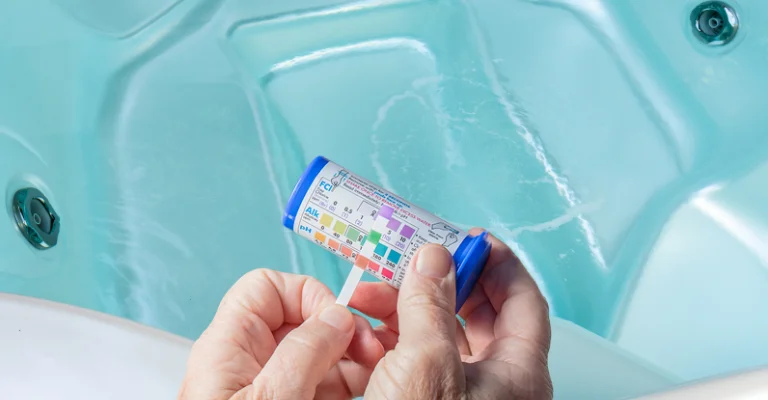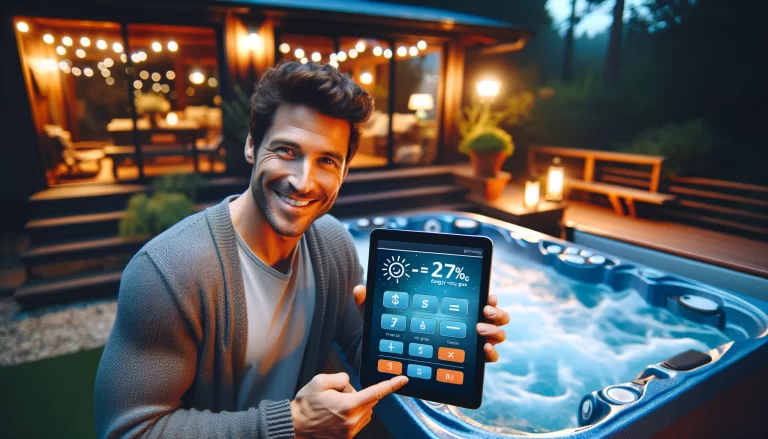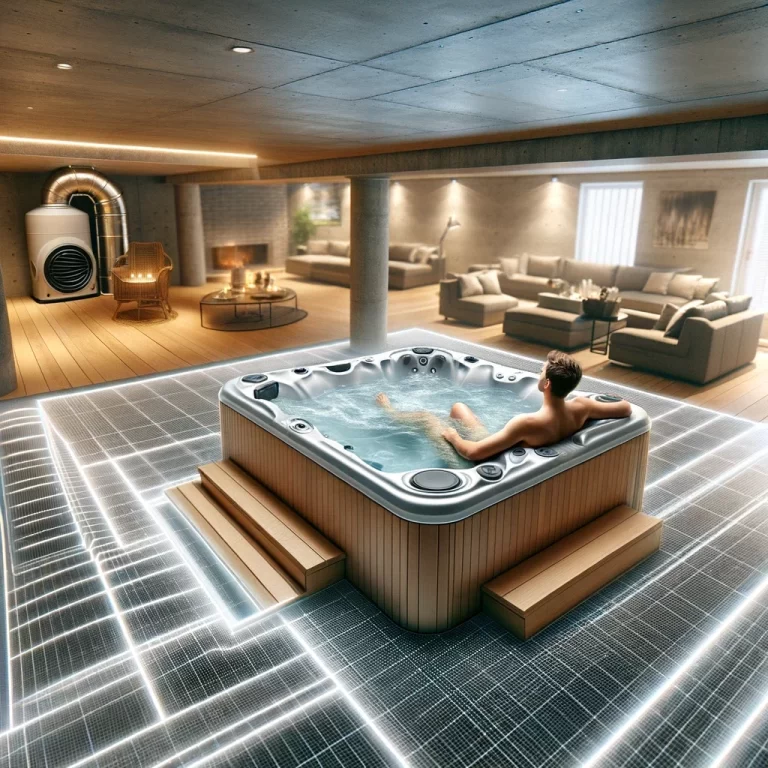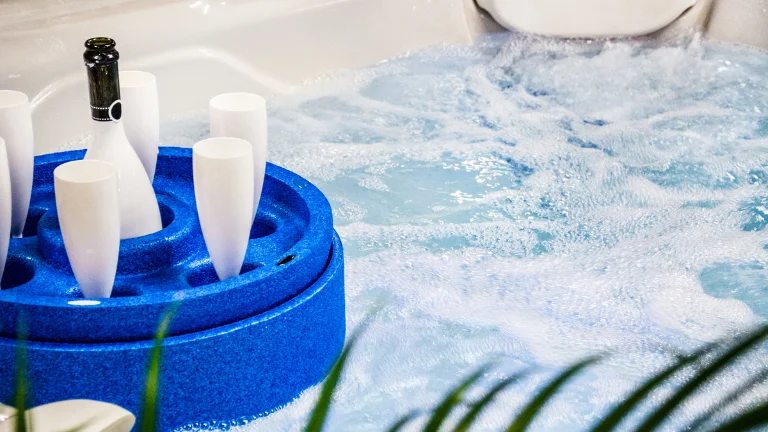What Causes Low Alkalinity In Hot Tub
If you’re having problems with low alkalinity in your hot tub, don’t worry! There are a few simple things you can do to raise it and get your hot tub back to its best.
In this blog post, we’ll walk you through the steps to raise alkalinity in a hot tub using baking soda and commercial alkalinity increasers.
Low alkalinity in a hot tub can cause problems, including green water, corrosion, and skin irritation. If you’re experiencing any of these problems, it’s essential to raise the alkalinity levels in your hot tub as soon as possible.
There are two main ways to raise alkalinity in a hot tub:
- Using baking soda
- Using a commercial alkalinity increaser
Baking soda is a less expensive option, but it can take a few days for the alkalinity levels to stabilize after you’ve added it. Commercial alkalinity increasers are more expensive, but they work faster.
We’ll also provide some tips on how to prevent low alkalinity from happening in the first place.
How to Raise Alkalinity in a Hot Tub
Step 1: Test your hot tub water.
Before you can raise the alkalinity levels in your hot tub, you need to know what the current levels are. You can test your hot tub water using a test strip kit or a liquid test kit.
Step 2: Determine the amount of baking soda or alkalinity increaser you need to add.
Once you know the current alkalinity levels in your hot tub, you can determine how much baking soda or alkalinity increaser you need to add. Most baking soda and alkalinity increaser products will have a dosage chart on the label.
Step 3: Add the baking soda or alkalinity increaser to your hot tub water.
If you’re using baking soda, add it directly to your hot tub water. If you’re using a commercial alkalinity increaser, follow the instructions on the product label.
Step 4: Turn on the jets and let the water circulate.
Once you’ve added the baking soda or alkalinity increaser, turn on the jets and let the water circulate for at least 30 minutes. This will help to dissolve the baking soda or alkalinity increaser and distribute it evenly throughout the water.
Step 5: Test the alkalinity level again.
After 30 minutes, test the alkalinity level of your hot tub water again. If the alkalinity level is not within the desired range, add more baking soda or alkalinity increaser and repeat steps 3-5.
Tips for preventing low alkalinity in a hot tub:
- Test your hot tub water alkalinity regularly and adjust the levels as needed.
- Avoid using too many pH reducers or muriatic acid, as these chemicals can lower alkalinity levels.
- Use a hot tub cover to help prevent evaporation and contamination.
- Add a water softener to your hot tub water supply, if necessary.
By following these tips, you can keep the alkalinity levels in your hot tub within the desired range and prevent a number of problems.
What Causes Low Alkalinity In Hot Tub
Various factors, including harsh chemicals, high pH levels, and water evaporation, can cause low alkalinity in a hot tub. When the alkalinity levels in a hot tub are too low, it can lead to pH imbalances, which can cause issues such as skin irritation and damage to the hot tub itself.
To prevent low alkalinity, it is essential to regularly test and adjust the pH and alkalinity levels in the hot tub and to use high-quality, pH-balanced chemicals. Limiting the amount of water lost through evaporation is also essential by keeping the hot tub covered when not in use and adding water as needed to maintain the proper water level.
What happens when you have Low Alkalinity In a Hot Tub
When you have low alkalinity in a hot tub, the following can happen:
- The pH level of the water can become erratic. This is because alkalinity helps to buffer the pH level and prevent it from fluctuating too much. If the alkalinity level is low, the pH level can become acidic, which can irritate your skin and eyes. It can also make your hot tub more vulnerable to algae blooms.
- Metal parts in your hot tub can corrode. Low alkalinity water is more corrosive than water with higher alkalinity levels. This can lead to corrosion of metal parts in your hot tub, such as the pump and heater.
- The water can become cloudy and develop scale. Low alkalinity can also contribute to cloudy water and scale buildup. This is because minerals in the water are more likely to precipitate out of solution when the alkalinity level is low.
- The water can become less effective at sanitizing. The effectiveness of chlorine and other sanitizers depends on the pH level of the water. If the pH level is too low, the sanitizer will not be as effective at killing bacteria and other microorganisms.
In addition to these problems, low alkalinity can also make your hot tub less comfortable to use. The water may feel acidic and irritate your skin and eyes. It may also be cloudy and have a strange smell.
If you suspect that you have low alkalinity in your hot tub, it is important to test the water and take steps to raise the alkalinity level to the recommended range. You can do this by adding baking soda or a commercial alkalinity increaser to the water.

Causes of low alkalinity in hot tubs:
- Poor water balance
- High calcium hardness
- pH level inconsistencies
Solutions for low alkalinity in hot tubs:
- Test for low alkalinity
- Shock treatment
- Additions of alkalinity increaser
- Maintenance tips
Closing Arguments:
Having a hot tub can be an incredible luxury that allows people to relax and unwind after a long day. However, many hot tub owners are sometimes frustrated by lower the levels in their tubs.
Low alkalinity can lead to unpleasant effects on the skin and eyes and even cause damage to the unit itself over time. Fortunately, understanding the causes of it is key to maintaining a healthy balance and protecting your investment.
🔍 Want more info? Head over to Hot Tub Patio 🛁 or check our Guides 📖 for extra reading!
Common Queries: about (What Causes Low Alkalinity In Hot Tub )
What is the cause of low alkalinity in hot tubs? The leading causes of it are a result of water that is too hard or too soft. The hardness of the water can lead to the formation of scale deposits inside the hot tub, which will impede flow and may cause damage over time.
Q. What can be done to correct the issue? To correct it, you must install a water softener. A water softener will soften the water and reduce the scale build-up by removing calcium and magnesium.
Q. Is there a way to test for low alkalinity? If you are concerned that your hot tub does not have enough alkalinity, using a pool test kit is the easiest way to test for this.
Q. What can be done to fix low alkalinity in hot tubs? You can fix it in hot tubs by using a water softener. A water softener will soften the water and reduce the scale build-up by removing calcium and magnesium.
Q. What are some potential causes of low alkalinity in hot tubs? The primary cause of it is an improper pH level. When the pH level drops below 7, it will drop the alkalinity level. If the pH does not rise or stabilize, you have a low alkalinity problem.
Q. What to do if the alkalinity is low in the hot tub? You should first check the pH level. If the pH is below 7, you need to raise it. If it is above 7, you may have a problem with high acidity and low alkalinity.
Q. What causes alkalinity to drop? When the pH is below 7, it will drop the alkalinity level. If the pH does not rise or stabilize, you have these problem.
Q. What are some potential causes of low alkalinity in hot tubs? Here are some potential causes:
- Hot tub not used for an extended period.
- Poor filtration system. Hot tub was set up incorrectly.
- Water added to the hot tub that is too cold or too warm.
Q. How do you fix low alkalinity and high pH in a hot tub? You can use a few methods to bring the pH down and raise the alkalinity level in your hot tub. The most common method is adding muriatic acid to your hot tub. This will bring the PH down and lower the alkalinity level simultaneously.











